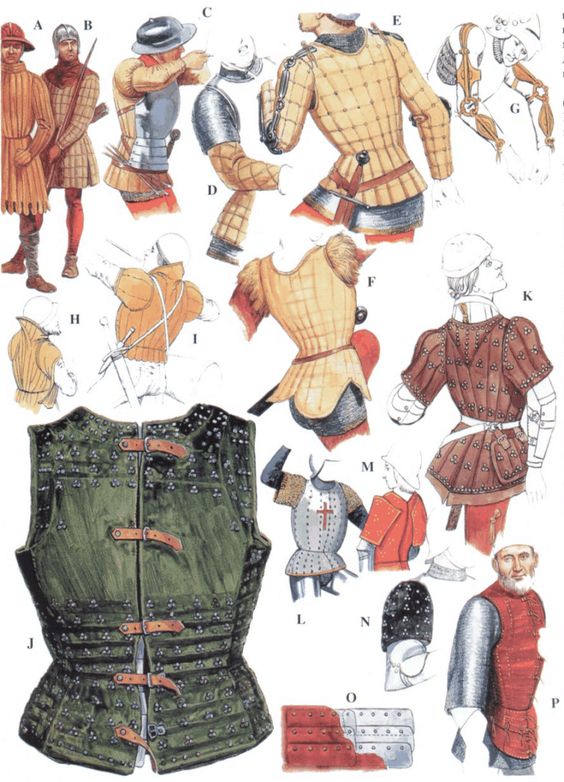I found this disembodied image on Pinterest, it appears to be from a book which I'd now like to add to my library. Does anybody know the title/ISBN of the book it is from?


| Stephen Curtin wrote: |
| Hi Johnathan. Regarding the Black Prince's jupon, wasn't it stuffed with cotton wool? Cotton wool is what we in the UK and Ireland call a kind of loose cotton, which has often led to confusion with people thinking that it's a type of wool. |
| Harry Marinakis wrote: |
| Those illustrations are from the Osprey books.
I would take those illustrations with a huge grain of salt. The Osprey books offer no verifiable references from which those illustrations are derived. |
| Jonathan Dean wrote: |
| A is also very clearly from the Morgan Bible, although the way in which the sleeves attach/do not belong to a separate under layer is an odd interpretation of the very clear manuscript style. |
| Jonathan Dean wrote: |
| Does it say where B is from? |
| Anthony Clipsom wrote: | ||
No - I don't think it is based on a specific work. The caption references Mancini's description of English archers' jacks and, generically, the paintings of Jean Fouquet. This dates the reconstruction to 1460s-1480s, I presume. I haven't been able to find a specific Fouquet illustration which the image might be from. |
| Dan Howard wrote: |
| B is a fantasy drawing. None of the other cross-hatched items are gambesons or padded jacks - they are jacks of plate. |
| Anthony Clipsom wrote: |
| No - I don't think it is based on a specific work.... I haven't been able to find a specific Fouquet illustration which the image might be from. |
| Harry Marinakis wrote: | ||
As I said.... without good references, I don't believe anything that I see in these illustrations. I could come up with a drawing that would just as valid. |